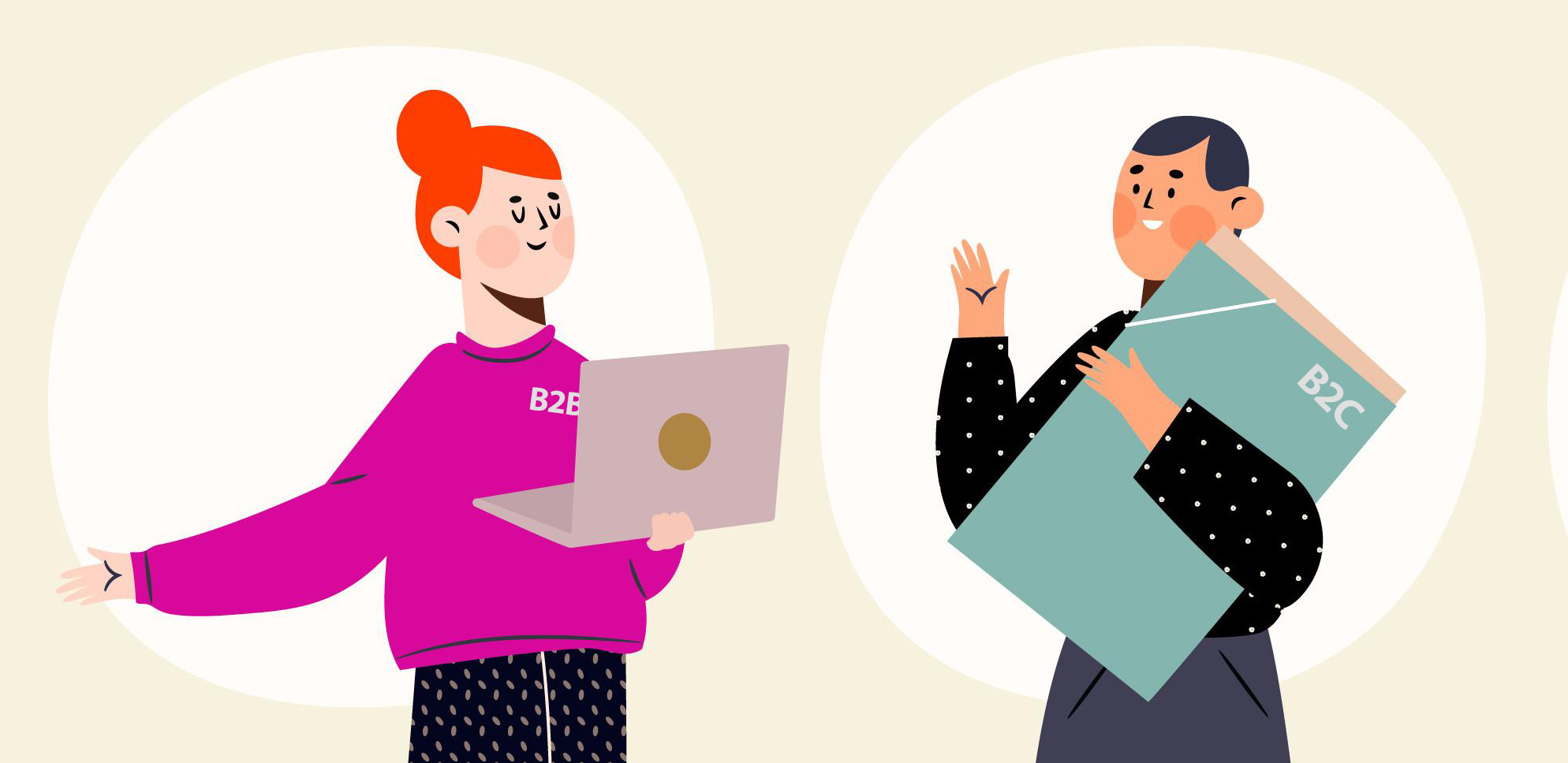Selling B2B is like dating—long conversations, trust-building, and multiple decision-makers. Selling B2C? It’s love at first sight or they swipe left.
While both B2B and B2C marketing aim to attract and engage audiences, the methods used for each differ significantly. These distinctions stem from the different buyer behaviours, decision-making processes, and objectives of businesses and individual consumers. Understanding these differences is crucial for creating effective marketing strategies that resonate with the right audience.
Audience and Decision-Making Process
One of the key differences between B2B and B2C marketing lies in the audience and the decision-making process. In B2B marketing, the target audience is other businesses, and the decision-making process tends to be more complex, involving multiple stakeholders such as decision-makers, influencers, and users. B2B buyers are often looking for solutions that can improve efficiency, reduce costs, or increase profitability, leading to a more rational and research-driven buying process.
In contrast, B2C marketing is focused on individual consumers, whose purchasing decisions are often more emotional and impulsive. B2C buyers are usually looking for products or services that fulfil personal needs or desires, leading to a shorter, more straightforward decision-making process. The focus is often on branding, emotional appeal, and convenience.
 B2B have more complex decision-making process and often look for efficiency, cost and profitability while B2C have are often on branding, emotional appeal and convenience.
B2B have more complex decision-making process and often look for efficiency, cost and profitability while B2C have are often on branding, emotional appeal and convenience.
Sales Cycle and Relationship Building
The sales cycle in B2B marketing is typically longer, as businesses invest significant time in researching products, comparing vendors, and negotiating deals. This longer cycle requires businesses to build long-term relationships and trust with potential clients. Content such as case studies, white papers, and webinars are often used to educate B2B buyers and demonstrate the value of the offering.
On the other hand, the B2C sales cycle is often shorter, driven by immediate needs or desires. B2C marketing focuses on making the buying process as simple and quick as possible. Techniques such as discounts, flash sales, and user-generated content are commonly used to drive immediate action. The focus is more on generating instant conversions rather than building long-term relationships.
 B2B requires to build long-term relationships and trust with potential clients while B2C focus on generating instant conversions.
B2B requires to build long-term relationships and trust with potential clients while B2C focus on generating instant conversions.
Tone and Messaging
B2B marketing tends to use a professional and data-driven tone, focusing on how products or services can solve specific business problems. The messaging often highlights metrics such as return on investment (ROI), efficiency improvements, and industry expertise.
In contrast, B2C marketing adopts a more emotional and direct tone, appealing to the desires, needs, or pain points of consumers. The messaging is more likely to focus on how the product or service will improve the consumer's lifestyle, bring convenience, or create a positive emotional experience.
 Tone tend to be more professional with messages of solving business problem and ROI for B2B marketing while B2C tend to be emotional with messages of improving consumer lifestyle and creating a positive emotional experience.
Tone tend to be more professional with messages of solving business problem and ROI for B2B marketing while B2C tend to be emotional with messages of improving consumer lifestyle and creating a positive emotional experience.
Content Types and Channels
In B2B marketing, content tends to be more educational and informative, aiming to provide value to the decision-makers and influencers involved in the purchasing process. Blogs, white papers, case studies, webinars, and detailed product demos are commonly used. Additionally, B2B marketers often leverage LinkedIn and industry-specific platforms to engage their audience.
B2C marketing, on the other hand, often relies on more engaging and visually-driven content. Social media platforms like Instagram, Facebook, and TikTok are frequently used to reach consumers. The content is typically shorter, designed for quick consumption, and focuses on creating emotional connections. Product images, user reviews, influencer endorsements, and short videos are commonly employed to capture consumer attention.
 B2B tend to be educational and informative on blogs, white papers and case studies while B2C tend to relies on more engaging and visually driven content using user reviews, influencer and short videos.
B2B tend to be educational and informative on blogs, white papers and case studies while B2C tend to relies on more engaging and visually driven content using user reviews, influencer and short videos.
Is there A Solution for Both Strategies?
Whether you're executing a B2B or B2C marketing strategy, HubSpot offers a versatile platform that can help streamline and optimise your efforts. With HubSpot, businesses can tailor their marketing strategies to fit the needs of their target audience, whether it's through CRM integration, marketing automation, or lead nurturing.
For B2B marketers, HubSpot provides tools to manage long sales cycles, nurture leads, and create detailed reports to track ROI. For B2C marketers, HubSpot offers features such as personalised email campaigns, social media scheduling, and dynamic content that helps drive quick conversions..
Ready to optimise your B2B or B2C marketing strategy with HubSpot?
Contact Woven today to learn how our experts can help you implement tailored solutions that drive results.


